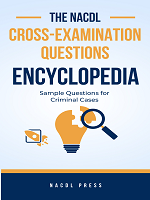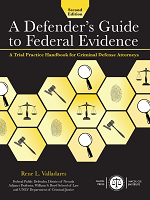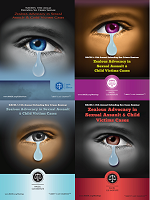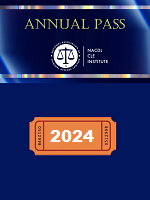Access to The Champion archive is one of many exclusive member benefits. It’s normally restricted to just NACDL members. However, this content, and others like it, is available to everyone in order to educate the public on why criminal justice reform is a necessity.
The results of the first phase of a project to review FBI microscopic hair analysis testimony and lab reports produced the staggering revelation that FBI examiner testimony in at least 90 percent of the trial transcripts analyzed contained erroneous statements.1 This development will have a profound impact on the criminal justice system and likely will serve as a milestone in the quest for forensic science reform.
More than two years ago, NACDL entered into an unprecedented collaboration with the Innocence Project (IP), the Federal Bureau of Investigation (FBI), and the Department of Justice (DOJ) to independently review thousands of cases in which the FBI conducted microscopic hair analysis of crime scene evidence. The focus is on cases analyzed before mitochondrial DNA testing supplanted microscopic hair analysis as a means of assessing the likelihood that a questioned hair matches a specimen from a known source. The review was prompted in part by the 2009 National Academy of Sciences report, which observed that “[n]o scientifically accepted statistics exist about the frequency with which particular characteristics of hair are distributed in the population. There appear to be no uniform standards on the number of features on which hairs must agree before an examiner may declare a ‘match.’”2 A second factor contributing to the review was the exoneration of three individuals between 2009 and 2012, after DNA testing contradicted FBI hair examiners whose testimony concerning the likelihood of a match exceeded the limits of science.3
Following these exonerations, NACDL and the IP entered into a joint agreement with the FBI and DOJ that established a mutual understanding as to the permissible limits of the science of hair microscopy and identified various types of reportorial or testimonial error by which examiners exceeded those limits. The agreement provided protocols for independent review by the FBI, the IP and NACDL; a procedure to discuss and attempt to resolve differences in interpretation; and, importantly, a process to ensure that all counsel and/or defendants received notification by the DOJ. The entire project was previously described in detail in an article that appeared in the July 2013 issue of The Champion.4
Pursuant to a mutual agreement among the parties, it was agreed that no results would be publicly released until a certain threshold of cases had been reviewed. That threshold was crossed in March. Accordingly, critical data was publicly released on April 20, 2015. Although there are still hundreds of cases to be reviewed, the recently released results show that there was widespread, systemic error in the way FBI examiners opined on the probative value of microscopic hair comparisons. As of March 2015, the FBI had reviewed approximately 500 cases, including 268 cases in which examiners provided inculpating testimony at trial. In 257 of those cases, approximately 96 percent, erroneous statements were presented to the jury. In at least 35 of those cases, the defendant received the death penalty, and errors were identified in 33 of those cases (94 percent).
To further underscore the pervasive nature of the problem, 26 of the 27 FBI examiners provided testimony that contained erroneous statements, or prepared lab reports with erroneous statements. The FBI testimony was offered in cases in 41 states.
It is important to underscore that the government has identified nearly 3,000 cases in which FBI examiners submitted reports or testified in cases using microscopic hair analysis. And while several hundred of those cases did not result in a conviction or the hair evidence was not used in any way, the review of 500 cases is only the beginning of the process. A major obstacle to completion of the review is obtaining transcripts. This is not an easy task for cases that are at least 15 years old and in many cases go back 30 years or more.
When this project was commenced, I observed that it represented “a commendable recognition by the FBI and the DOJ that there is an affirmative duty to correct when events establish that the evidentiary value of a scientific opinion has exceeded the limits of science.”5 I stand by that statement. To be sure, there were reasons to question the accuracy of the testimony long before the NAS report and recent exonerations. This problem should have been addressed with vigor and determination long ago. With that said, the recent effort should be lauded and should serve as a model for the future. The duty to correct, which involves both aggressive review and defense notification, is a principle whose time has come.
In this regard, it was heartening that when the recent data was released, both the FBI and the DOJ committed to working with NACDL and the IP to take the following steps:
• Conduct an independent investigation of the FBI laboratory protocols, practices, and procedures to determine how this occurred and why it was allowed to continue for so long;
• Continue aggressive measures and review the process to determine whether additional steps can be taken to secure the transcripts and/or lab reports and review the hundreds of remaining cases that may contain invalid scientific statements; and
• Strongly encourage the states again to conduct their own independent reviews where examiners were trained by the FBI.6
For the criminal defense bar, and the countless accused persons whose cases may have been tainted by erroneous testimony by state examiners, this last point cannot be overemphasized. It is well established that the FBI lab trained many state examiners. Given the pervasiveness of the errors by the FBI examiners, it is reasonable to conclude that countless state examiners, all of whom would have bolstered their credentials by citing that they were trained by the FBI, will almost certainly have committed similar errors. Therefore, it is incumbent upon every state to undertake its own audit of microscopic hair analysis evidence proffered prior to the advent of mitochondrial DNA testing in these cases. As of this writing, efforts are underway in Texas, New York, North Carolina, and Massachusetts. There is obviously a long way to go.
Further, beyond the joint statement issued with the FBI and DOJ, NACDL believes that similar reviews should be undertaken with respect to other forensic disciplines involving pattern, impression or trace evidence, such as fiber, bullets, bite marks, tire impressions, and shoe marks. This historic microscopic hair review project and its stunning interim conclusions clearly underscore a critical need to look at a wide range of old cases to identify those in which exaggerated testimony may have denied accused persons a fair trial or contributed to wrongful conviction. Beyond that, it should provide the impetus for a whole new approach to forensic science, one in which objective and validated science supplants conjecture and exaggeration. Since 2010, NACDL has urged reforms that will promote a culture of science that encourages independence, openness, and objectivity with respect to the presentation of forensic evidence in criminal cases.7 In the wake of the microscopic hair review analysis, the case for reform is stronger and more urgent than ever.
Notes
- Press Release, NACDL, FBI Testimony on Microscopic Hair Analysis Contained Errors in at Least 90 Percent of Cases in Ongoing Review: 26 of 28 FBI Analysts Provided Testimony or Reports With Errors (April 20, 2015), available at http://www.na cdl.org/NewsReleases.aspx?id=37023.
- National Academy of Sciences, Strengthening Forensic Science in the United States: A Path Forward 160 (2009).
- Keith L. Alexander, DNA Tests Set Free D.C. Man Held in Student’s 1981 Slaying, Wash. Post, Dec. 16, 2009; Spencer S. Hsu, Kirk Odom Officially Exonerated: DNA Retesting Cleared Him in D.C. Rape, Robbery, Wash. Post, July 13, 2012; Spencer C. Hsu, D.C. Judge Exonerates Santae Tribble in 1978 Murder, Cites Hair Evidence DNA Test Rejected, Wash. Post, Dec. 14, 2012.
- Norman L. Reimer, The Hair Microscopy Review Project: An Historic Breakthrough for Law Enforcement and a Daunting Challenge for the Defense Bar, The Champion, July 2013, at 16.
- Id.
- See supra note 1.
- Principles and Recommendations to Strengthen Forensic Evidence and Its Presentation in the Courtroom, adopted by the NACDL Board of Directors February 27, 2010, available at www.nacdl.org/reports (report) and http://www.nacdl.org/About.aspx?id=19910 (Feb. 27, 2010, board resolution with link to report).
About the Author
Norman L. Reimer is NACDL’s Executive Director and Publisher of The Champion.
Norman L. Reimer
NACDL
1660 L Street, NW, 12th Floor
Washington, DC 20036
202-465-7623
Fax 202-872-8690
Email: nreimer@nacdl.org






